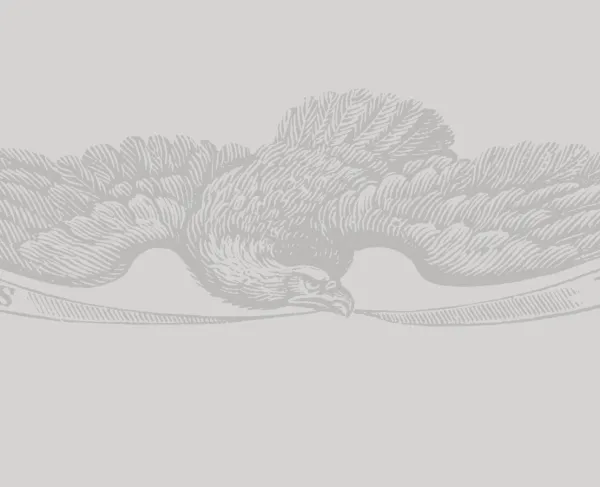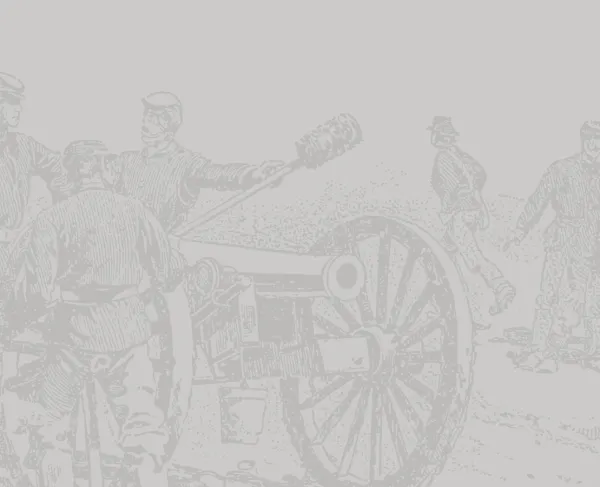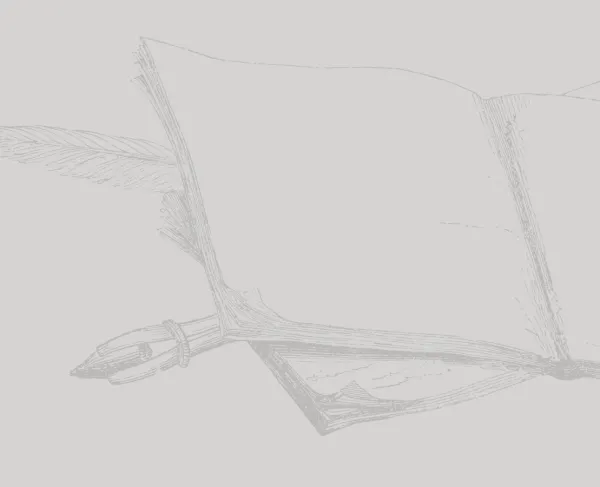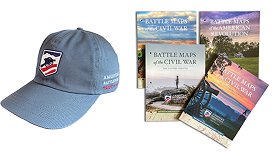“Brady's Photographs of the Campaign in Virginia”

A reporter described an 1864 exhibit of photographs from the Overland Campaign in Mathew Brady's photography gallery.
Brady's Photographs of the Campaign in Virginia.
Not long since, we paid a visit to Mr. Brady's gallery, and reported in these columns what we saw there. The walls were hung with the ample record of our great Sanitary Fair, and the pictures easily seemed—if one forgot for a moment, or did not know the story—the record of some festival fit for piping times of Peace. Shows of armor, galleries of pictures, halls hung with flowers and banners, and wealth and beauty ministering to gayly dressed crowds.
"Of young and old come forth to play
On a sunshine holiday!"
Alas! It was a gay mask for grim-visaged War instead, the busy garnering of wine and oil to make ready for the scene which, today, stand mirrored with too painful reality on these same walls, and in the very presence, as it were, of the brighter scene that preceded them.
Mr. Brady has collected in his rooms some seventy views large and small, of places made interesting by General Grant's present campaign in Virginia. Not places only, but Generals, is plenty too. Gen. Grant himself, with his staff and without it; standing by his horse, and his horses standing by themselves, a plain, blunt, homespun man as one would wish to see; good to look at it when one feels wavering and depressed; a man of business, not for show, and instilling strength and faith into the timidest who studies that quiet, sensible, honest face.
Gen. Burnside, too, in equal variety of attitude and circumstance, and other Generals—Griffin, Hancock, Birney, Barlow, Gibbon, Wright, Neill, Martindale, Russell, and Meade. Here we can study these brave, patient hard-working men as they live and move, not in holiday trim, but, as every day finds them in the rough undress of their active, engrossing and sternly real work.
To the Tribune report, too, this figure, well remembered, of Assistant Secretary of War Dana, looks pleasantly familiar, sitting at rest for a little while in his chair in the door of his tent.
Equally interesting with these pictures of men we hold in deserved honor and affection—are the pictures of the places where they are working or have worked. Here are City Point and Bermuda Hundred, real as life itself, with all their bustle and confusion-crowd of wagons, steamboats, vessels of all sorts and sizes—a motley crew full of animation and interest. Port Royal, White-House Landing, Wilcox Landing, each and all delicate, finished, above all, true pictures of some of the places where is being acted the one drama which makes all other dramas flat, stale and unprofitable to us at home.
Perhaps, in our carelessness, we should have forgotten to ask Mr. Brady whether there was no news to bring us of the black soldiers and their whereabout. But we are reminded, it seems. Here we have "the Rebel Battery taken by Burnside's colored troops"—we should like to see the men that did it, and thank them, mutely, here; perhaps, if we look, we shall find them. Not them, indeed, but "Execution of a negro in front of Petersburg"—that we may see; and, lest we miss the ghastly scene, here we have it in duplicate....
The Burial Place at Fredericksburg, and a group of of wounded soldiers there, bring plainly before us—sharp, stern, and undisguised—the bitterness of this business. That ugly box, those covered stretched-out bodies whose stockinged and bare feet stick out, writhed and twisted as death left them—what horrid eloquence is heirs; hot and it is; there is no glory in it, no triumph, it is unspeakably sad. Sleep in peace, dear brothers, who lie there, slain for us and ours. Rough burial, after rough life and bitter days, but your reward is sure....
To the artist-eye these photographs offer a hundred beauties. The delicacy of the distance, the foliage, the sharp, clear, unconfused confusion of the crowded wharves and piers and landings, how admirable it is, all of it. In the small photographs of the Sanitary Commission there are two very delicate transcripts of trees; and there is a most charming study of arrow-head and other water weeds in the "Pontoon Bridge over the James," which, if painted so, would be, of course, most ridiculous! In closing, let us observe how beautiful all these little landscapes are in arrangement and tone—how subtly delicate, without convention, the composition of the masses, the lights and darks. This, at a little distance—no old-school picture could better meet all such demands.... And yet Nature clearly proves by this work that perfect truth and faithfulness of detail are not inconsistent with the most beautiful effects which conventional artists of the old school would seem to claim as their special gift.
Source:
The New York Tribune, "Brady's Photographs of the Campaign in Virginia," July 28, 1864, Page 5. (Accessed through Newspapers.com)





